
From the very beginning, Christians have celebrated Advent with some antiphons like O Radix Jesse that encapsulate the Old Testament prophecies fulfilled in the Incarnation. “O Radix Jesse,” translated in English as “O Root of Jesse,” celebrates the royal descent of Jesus through His mother Mary.
Like this:
Like Loading...
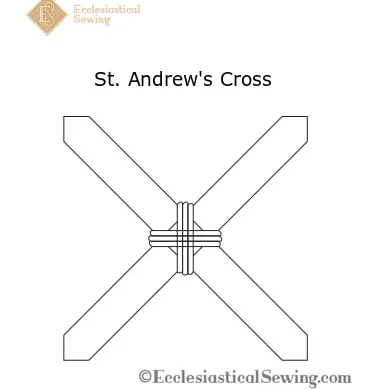
The Saint Andrew Christmas Novena Prayer. This is a beautiful prayer about the birth of Christ that can serve as a meditation for Advent. The Saint Andrew Christmas Novena Prayer is customarily prayed up to fifteen times daily from November 30th until Christmas Day.
Like this:
Like Loading...
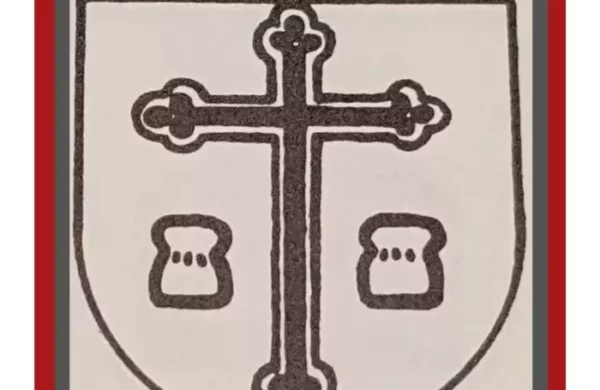
Lutherans and Roman Catholics celebrated the feast days of St. Philip and St. James the Apostles on May 1st and 3rd. Both church bodies agree on the importance of these Apostles. Philip was called by Jesus in Bethsaida and brought Nathanael to Christ, while St. James is traditionally believed to have been martyred. Ecclesiastical Sewing has introduced “The Apostle Collection” of church vestments, emphasizing these important figures in Christian history.
Like this:
Like Loading...
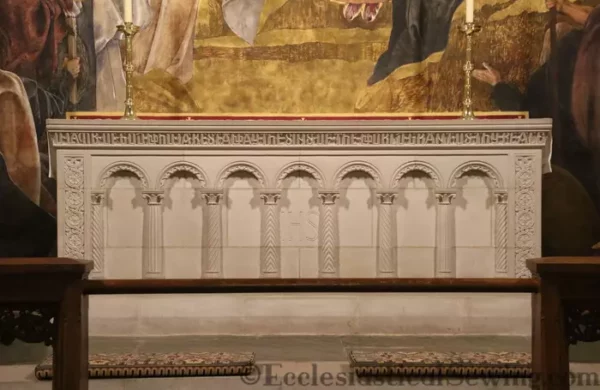
Good Friday Liturgical Art. The story of Joseph of Arimathea’s honorable burial of Jesus.
Like this:
Like Loading...
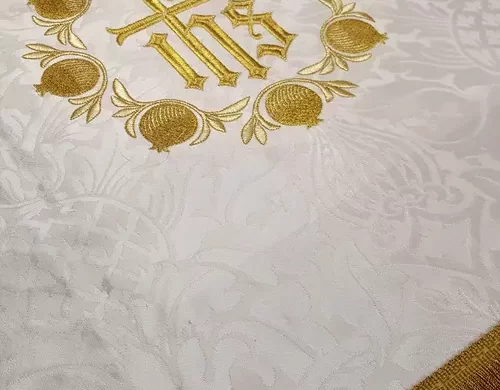
Ecclesiastical Sewing introduced a design collection entitled Dayspring. The collection features timeless and elegant designs created by our liturgical artist friend, Edward Riojas. The collection features a variety of design themes that symbolize both the Nativity of Christ and His Resurrection. The designs were gold threads stitched on white paraments and vestments, featuring designs like the IHC monogram with a rising sun, the Pomegranate design, and several others found in our various collections.
Like this:
Like Loading...
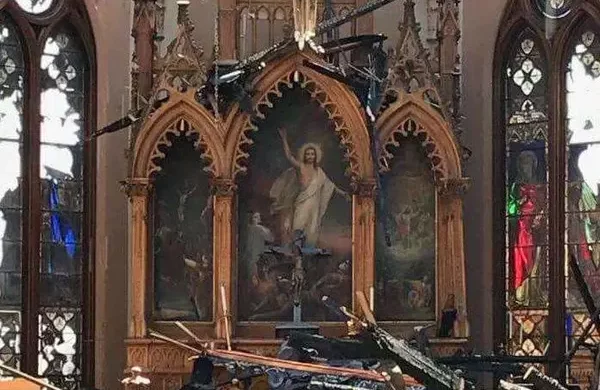
The Historic Trinity Evangelical Lutheran Church in Milwaukee was on fire. Throughout the day and evening hours, there was a live news feed of fire destroying a once beautiful church.
Like this:
Like Loading...
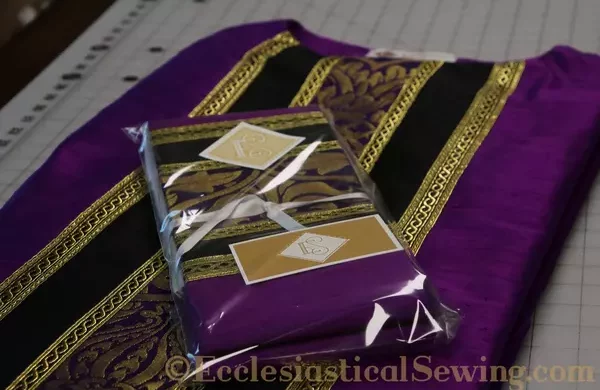
The Monastic Chasuble is a wonderful, full chasuble that is both graceful and elegant. It is suited for use in a variety of church settings. In many of the larger traditional cathedrals, altar hangings are no longer used. The chancel is often open with a large altar made from stone as in the above photo. These vast open spaces are lovely and well suited for using a Monastic Style Chasuble.
Like this:
Like Loading...

If your travel plans include a visit to Minnesota, this is an Ecclesiastical Arts Needlework Collection worth seeing. Many of the pieces in the collection are becoming fragile with age, and so, this may be the last exhibit for some of the pieces in the collection. The rose copes shown in the above photo are embroidered on a lovely white silk ground fabric. The piece is close to 100 years old or more.
Like this:
Like Loading...
A special Kickstarter Campaign in the works by the Massachusetts Historical Society, arranging for an Exhibition of Historical Costumes and would like to publish a companion book that details information about the techniques, costumes, and designs that will be on display.
Like this:
Like Loading...
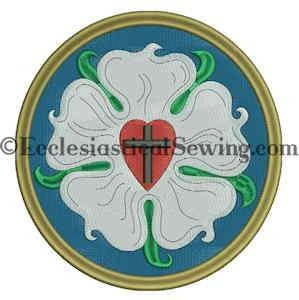
Our Luther Rose Brocade features the Luther Rose Symbol woven into the fabric. Created by Carrie R. around the fall of 2016, it was designed for the 500th Anniversary of the Protestant Reformation. Inspired by her Patonce Cross and Luther Rose Symbol, Carrie collaborated with artist Edward Riojas to perfect the design. The fabric was then sent to England for production, resulting in this unique and meaningful brocade.
Like this:
Like Loading...
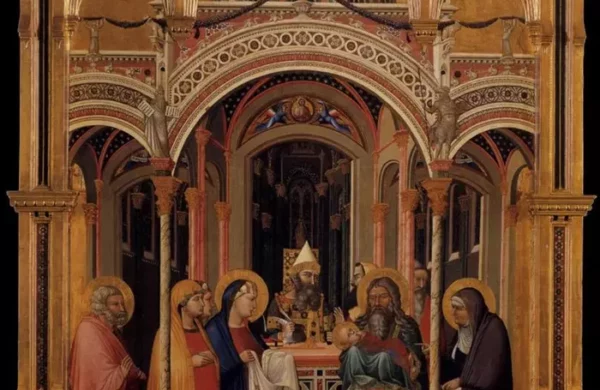
Church celebrates the Purification of Mary and the Presentation of Jesus. This event honors and fulfills the requirements from the Old Testament. The Law commanded that every mother should be cleansed from the experience of childbirth. The life of every firstborn child belonged to the Lord and must be redeemed. For readings look at Luke 2:22-32. This feast day is also called Candlemas by some. It is where the Candles have a tradition of being blessed. Also, some families wait until now to take down their Christmas ornaments. In celebration and for your viewing pleasure, I would like you to look up a painting by Ambrogio Lorenzetti.
Like this:
Like Loading...

During Advent, we see candles in wreaths. As children, we opened little Advent Calendars with goodies. At night, we hear the O Antiphons. And yet another symbol and image that is associated with Advent is the Tau Cross–the Anticipatory cross of the Old Testament.
Like this:
Like Loading...

The third special post in July recounts summer travels to Montana, It reflects on the beauty of old, weathered stumps in various locations, contemplating the possibility of life lingering within them. The lush greenery and surviving stump found on the Lohn’s Lake Trail inspire hope and reflection on promises from days of old. As a reference to the O Antiphon “O Root of Jesse,” connecting the natural surroundings with deeper reflections.
Like this:
Like Loading...
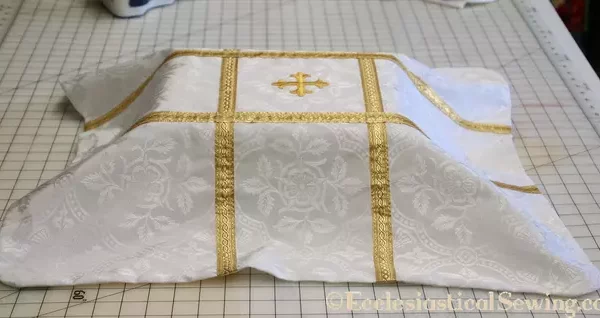
The tradition within the church is to use a Pall to cover the coffin for funerals. At the time of Pugin (early to mid-1800s), Palls were elaborate items, often embellished with extensive embroidery and gold work. Palls are still used today to cover a coffin during a funeral service. They are frequently white in color with a cross or other appropriate design applied. While churches may own a Pall for covering a coffin, they may not have a pall for covering an urn. The use of urns to replace large coffins is becoming more common.
Like this:
Like Loading...

The remarkable story of St. Mark’s Basilica in Venice, revealing the hidden sarcophagus of St. Mark the Evangelist beneath an altar. The basilica, erected in the 9th century, and holds the remains brought from Alexandria by Venetian merchants.
Like this:
Like Loading...















You must be logged in to post a comment.